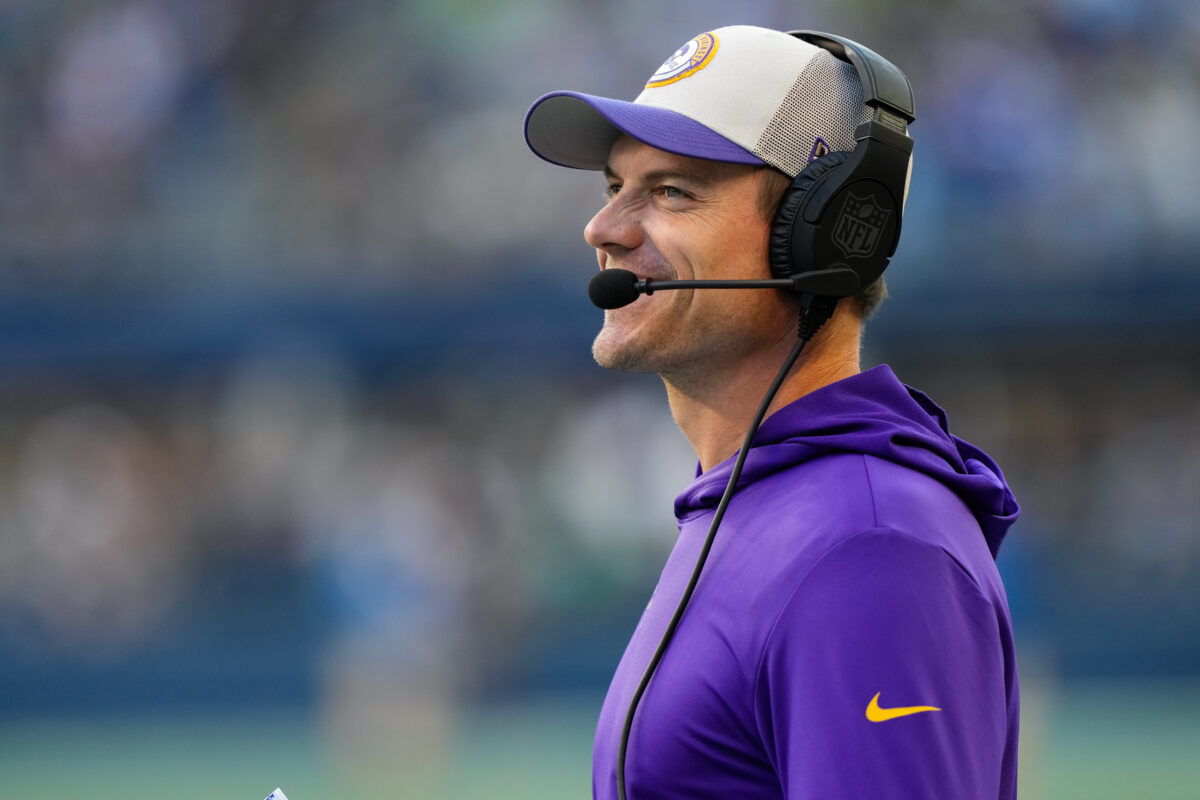The Minnesota Vikings have struggled to protect the passer for the better part of the last decade. This season has been a mixed bag, but the amount of pressures have been higher mainly due to quarterback Kirk Cousins throwing the ball nearly 50 times per game.
One of the ways that you can help protect your quarterback is by running max protect pass plays, but there brings a downside along with that. Below is a max protect play from Sunday’s game against the Los Angeles Cardinals.
This is a rather simple play. Cousins uses play-action and has two options at the top of his drop: Justin Jefferson to the nearside on an in route and T.J. Hockenson on a corner route to the far side. The idea is for one of these to come open. Problem is, with only two players running routes, it makes it easy to cover.
Because nobody else is running a route underneath, both Jefferson and Hockenson get immediately double-teamed. It also doesn’t help that the Vikings only have 22 yards of space to work with.
Under Mike Zimmer, the Vikings used a lot of max protect shot plays, but usually come around the 50-yard line. That space makes a lot of difference with only two players out in the route concept.
Max protect plays can work, but it’s important to use spacing well. That didn’t happen here, but why is that? Did Kevin O’Connell see something that had him call the play so close to the end zone? He was likely trying to get Hockenson on the corner route.
These can be great play calls, but they come with a potential cost.
[lawrence-related id=83626,83621,83599,83585,83615,83591]
